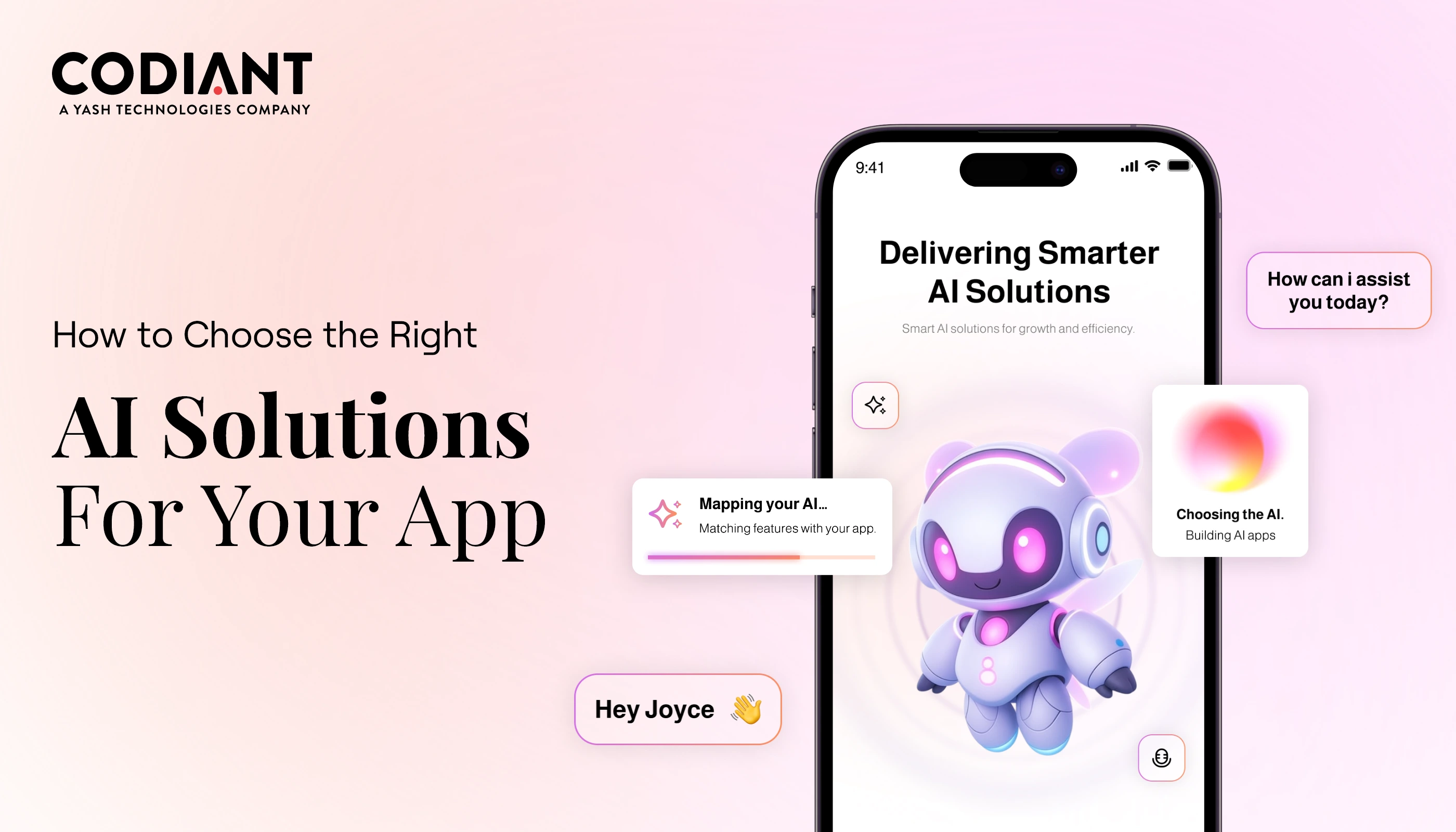How to Build an Esports App
Table of Contents
Subscribe To Our Newsletter

The esports world is colossal with diverse games, communities, and interests. From professional tournaments to casual competitions, Esports events broadcast on various streaming platforms and attract a dedicated fan base with build an Esports App.
Understanding the dynamics and opportunities within this industry is the first step in building a successful esports tournament app.
However, you should identify your app’s niche to stand out in the gaming world. You should know if your esports app development will focus on a specific game, genre, or region. Determine who are your targeting players, and viewers.
What features your esports app will cover? Define your niche to cater to a specific audience effectively. With the inclusion of interactive features in your application, you can seize a portion of the expanding esports market.
You can create your own game app to play video games and genres that draw millions of viewers and players across the globe.
Let’s dive deeper into how to build an esports fantasy app here in the blog.
Steps to Build An Esports Gaming App

Step 1- Conceptualize & Plan Your App
- Defining Your App’s Purpose and Goals
What do you want your esports app to achieve? Is it primarily an information hub, a live streaming platform, or a tournament organization tool? Define your app’s core purpose and set clear goals, as this will guide your development process. - Identifying Your Target Audience
Understand your target audience and cater to professional gamers, casual players, or esports enthusiasts. Their needs and preferences will influence the design and features of your esports tournament app. - Researching the Competition
Analyze the latest esports app and related gaming platforms. This evaluation will enable you to identify any gaps in the market and thus, help you distinguish your esports tournament app.
Step 2- Design & UI/UX are Significant
- UI Design
Create a visually appealing and intuitive user interface in UI UX development. The design should reflect your app’s identity and cater to your target audience. Consistency in design elements is the key. Colors, fonts and icons are major design elements. - UX Design
Focus on delivering a seamless and enjoyable user experience. Ensure that navigation is easy, and users can access information or features with minimal effort. Effective UX design encourages user engagement. - Wireframing & Prototyping
Before diving into gaming app development, create wireframes and prototypes to visualize the app’s structure and functionality. This step allows you to identify potential issues and make necessary improvements.
Step 3- Choose the Right Technology Stack
- Front-End Development
Select the appropriate front-end technologies, such as programming languages (e.g., JavaScript), frameworks (E.g. React or Angular), and libraries. Ensure your app’s user interface functions smoothly. - Back-End Development
Choose Python with Django or Node.js with Express.js as the back-end language and framework to handle server-side operations and data processing. It will be the backbone of your app. - Database Management
Determine the most suitable database type, whether it be a relational database like MySQL or a NoSQL database like MongoDB, to manage your app’s data. - Hosting and Cloud Services
Choose a dependable hosting provider and consider utilizing cloud services like AWS or Azure for efficient scalability and data storage.
Step 4- Append Interactive Features & Functionality
- Core Features
Include fundamental features such as user registration, authentication, profile management, and access to esports news and updates.
- Advanced Features
Consider features like push notifications, live chat, and social sharing to enhance user engagement and interactivity. - Live Streaming Integration
If your app offers live esports streaming, integrate platforms like Twitch or YouTube Gaming to provide seamless viewing experiences.
- Tournament Management
If your app facilitates esports tournaments, implement features for organizing, participating, and tracking competitions. This includes team creation, match scheduling, and leaderboards. - User Profiles and Social Features
Allow users to create profiles, connect with friends, and join esports communities. Social features like comments and forums can boost user interaction.
Step 5- Developing the Gaming App
- Front-End Development
Front-end developers create the user interface, ensuring it matches the UI/UX design. They implement features, data displays, and user interactions. - Back-End Development
Back-end developers handle server-side logic, including database management, user authentication, and data retrieval in the mobile app development process. They establish the core functionality of your esports tournament app. - Database Setup
Set up the database structure, design schemas, and ensure data storage and retrieval are efficient and secure. - Testing & QA
Before launching, thoroughly test your app for functionality, usability, performance, and security. Identify and address any bugs or issues.
Step 6- Monetization Strategies
- Advertising and Sponsorships
Incorporate advertisements and sponsored content. This can include display ads, video ads, and sponsored esports events. - In-App Purchases
Provide the option for in-app purchases of virtual items, premium content, or supplementary features. This helps generate revenue through microtransactions. - Subscription Models
Provide subscription plans that grant users access to exclusive content, ad-free experiences, or premium features for a recurring fee. - Merchandise Sales
Sell branded merchandise, such as clothing, accessories, or digital items related to popular esports teams or games. - Partnerships and Collaborations
Collaborate with esports teams, players, or game developers for promotional activities, exclusive content, or special events.
Step 7- Legal & Compliance
- Copyright & Licensing
Obtain the appropriate licenses and permissions for any content or intellectual property utilized in your esports app development. It includes game logos or images according to the particular copyright and licensing laws. - Terms of Service & Privacy Policy
Make transparent terms of service and privacy policy documents to safeguard your application and its users. These documents should clearly outline user rights and responsibilities, as well as data handling practices. - Regulatory Compliance
Stay compliant with relevant regulations, such as data protection laws (E.g. GDPR), and legal requirements in the regions where your app is accessible.
Step 8- Perform Testing & QA
- Functional Testing
Check that all features and functionalities work as intended. Test registration, login, navigation, and key features like live streaming and chat. - Usability Testing
Evaluate the user interface and experience. Gather feedback from test users to make necessary improvements in design and accessibility. - Performance Testing
Assess the app’s performance, including load times, responsiveness, and scalability. Ensure it can handle a high volume of users and data. - Security Testing
Conduct security assessments to identify vulnerabilities and protect user data. Secure authentication and data encryption are essential.
Step 9- Pre-Launch and Marketing is Necessary
- Pre-Launch Marketing
Generate anticipation and interest for your app by creating a buzz on social media, gaming forums, and esports communities. Build an email list of potential users. - App Store Optimization (ASO)
Optimize your app’s listing on app stores (E.g. Apple App Store, Google Play Store) with relevant keywords, appealing visuals and clear descriptions. - Social Media & Community Building
Engage with the esports community through social media channels, forums, and Discord servers. Foster a loyal user base that can help spread the word. - Post-Launch Marketing
Continue marketing efforts post-launch. The efforts include running promotional campaigns, collaborating with influencers, and gathering user reviews and feedback.
Step 10- Take Care of Post-Launch Maintenance and Updates
- Gathering User Feedback
Actively collect feedback from users and take their suggestions and concerns seriously. This helps in identifying areas for improvement. - Regular Maintenance
Perform routine maintenance, including bug fixes, server updates, and content updates. Ensure the app runs smoothly and stays secure. - Feature Updates
Release esports app feature updates based on user feedback and market trends. This will keep your app up-to-the-mark and viable in the market.
Additionally, you can expand your esports tournament app on several platforms including smart TVs, gaming consoles, and web browsers. This would help to reach a wider audience.
As your user base grows, scale your server infrastructure to handle increased traffic and ensure consistent performance of esports tournament app. To reach a global audience, localize your esports app by providing content and support in multiple languages.
Features of the Esports App

- UI Simplicity
The ideal esports application should possess an intuitive and user-friendly UI, ensuring ease of use for all users. - Calendar Functionality
Each day on the calendar should display a comprehensive list of events, while a time-based listing would be highly advantageous. - Tournament Status
The application should provide a clear and organized layout, indicating the current stage of each tournament and identifying any pending stages. - Newsfeed Integration
Crucial esports news should be readily available in the users’ news feed. This should encompass news circulating on social media platforms, as they serve as significant sources for esports-related information. - Chat Rooms
The inclusion of chat rooms enables users to engage in discussions with fellow esports enthusiasts, facilitating the exchange of notes regarding games, tournaments, and other relevant topics.
Esports App Cost
The esports app cost can vary significantly, ranging from tens of thousands to several hundred thousand dollars or even more, dependent upon the precise requirements and objectives.
So, establish a well-defined budget, prioritize the desired features, and consider the expenses associated with long-term maintenance and updates while strategizing esports app development.
To make informed financial choices, it is vital to ask for quotations from app development teams and conduct thorough research.
Conclusion
The esports industry is ever-evolving and your esports tournament app can play a vital role in its growth. Stay up to date with the gaming app development industry trends, listen to your users, and continue to adapt and innovate to remain competitive in the dynamic world of esports.
Building an esports app is a multifaceted journey. With expert mobile app development companies, an in-depth understanding of the esports community, and cautious planning for esports app development, you can create a useful platform for esports enthusiasts and provide them with a top-notch esports experience.
Our team, at Codiant specializes in pioneering gaming app development to bring your gaming vision to life. Get in touch.
Frequently Asked Questions
Define your esports goals (competitive gaming, tournaments, leagues)
Choose the games/titles you want to feature
Build an online platform or website for your esports organization
Establish rules, formats, and structures for competitions
Promote and market your esports brand to attract players and viewers
Secure sponsorships and partnerships for funding and prizes
Organize and host tournaments, events, or league matches
Conduct market research to understand your target audience
Select a technology stack (website, streaming, matchmaking systems)
Design and develop a user-friendly esports platform
Integrate features like game lobbies, leaderboards, and live streaming
Implement secure payment gateways for entry fees or subscriptions
Establish rules, policies, and moderation for fair play
Build a community and market your platform to gamers and esports enthusiasts
Continuously update and improve based on user feedback
Sponsorships and brand partnerships
Advertising and media rights
Ticket sales and event merchandise
Subscription models or platform fees
Prize pool contributions from game publishers
Coaching, training, and player development services
Merchandising and licensing deals
In-game virtual item sales or micro-transactions
Featured Blogs
Read our thoughts and insights on the latest tech and business trends
How AI Helps eCommerce Businesses Scale Faster: 10+ Proven Strategies
- December 4, 2025
- Artificial Intelligence E-commerce
Running an eCommerce business today means managing more products, more customers, and more data than most teams can handle manually. As order volumes rise, tasks like customer support, inventory planning, product discovery, and marketing start... Read more
How to Choose the Right AI Solutions for Your Existing App
- December 1, 2025
- Artificial Intelligence
Businesses today are under pressure to move faster, deliver personalized experiences, and operate with greater accuracy. This is why many enterprises and startups are now looking for ways to add AI features to their mobile... Read more
How to Enable AI for Smart Diet Planning and Client Progress Tracking
- November 26, 2025
- Artificial Intelligence
Smart diet planning and consistent progress tracking have become essential in a world where people want faster, more accurate ways to manage their health. Traditional methods like manual calorie counting or generic meal charts often... Read more




